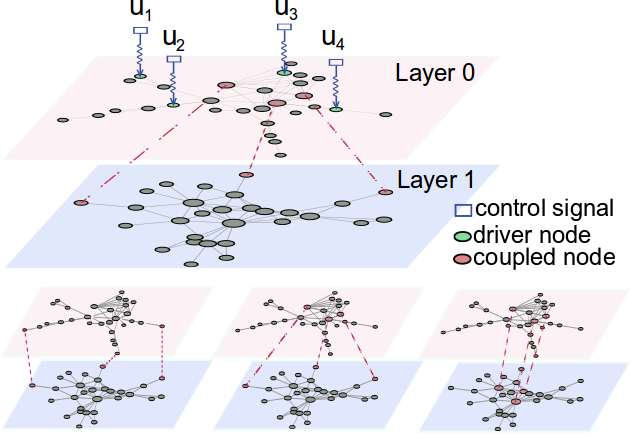Value of peripheral nodes in controlling multilayer scale-free networks
Yan Zhang, Antonios Garas and Frank Schweitzer
Physical Review E (2016)
Abstract
We analyze the controllability of a two-layer network, where driver nodes can be chosen randomly only from one layer. Each layer contains a scale-free network with directed links and the node dynamics depends on the incoming links from other nodes. We combine the in-degree and out-degree values to assign an importance value w to each node, and distinguish between peripheral nodes with low w and central nodes with high w. Based on numerical simulations, we find that the controllable part of the network is larger when choosing low w nodes to connect the two layers. The control is as efficient when peripheral nodes are driver nodes as it is for the case of more central nodes. However, if we assume a cost to utilize nodes that is proportional to their overall degree, utilizing peripheral nodes to connect the two layers or to act as driver nodes is not only the most cost-efficient solution, it is also the one that performs best in controlling the two-layer network among the different interconnecting strategies we have tested.

